Hello again, gang! Time once again for the (pseudo-)weekly update on whatever's on my mind. To continue from last time, here is a photo of some of the teaching staff at Kanashima JHS.

Actually, it's a photo of a photo, but whatever. Try to guess which one is me! You'll never guess. Whenever I look at this, the old Sesame Street song pops into my head: "One of these things is not like the others, One of these things just doesn't belong..." To tell the truth, most of these people (the ones that aren't labeled) are just members of the PTA or the local board of education. This photo was taken for the 60th year anniversary of Kanashima, which was a big deal. I don't really know why they invited me to be in the picture, I think I kind of spoil it, but the secretary just kind of dragged me in. I like that pretty orange tree in the background, though - it's called a momiji, it's kind of a Japanese maple, and it changes color very dramatically - during the fall, when this picture was taken, people sometimes wander around the countryside viewing and photographing momiji. I think that's kind of cool. The location of this photo is at the front gate of the school, and the photographer chose it specifically because of the momiji. It's a nice touch.
I've started a new policy at Kanashima Junior High School - in order to motivate the students to talk to me and improve their English communication skills (also just to motivate them to start a conversation with me, instead of vice-versa - the kids want to talk to me, but they're really shy, and I guess afraid of what their classmates will think if they talk to the big weird foreigner. This extra motivation kind of gives them the excuse they need), I've implemented something called "holler dollars." You give me a holler, I give you a holler dollar. Basically, if they come and talk to me outside of class, and use a sentence from their grade level, I'll give them a little sheet of paper. Each one has a number. At the end of every month, I will give away four CD's for holler dollars: one for the person who has the most in each grade level, and one lucky draw. So far it's been pretty successful - I've given away over 100 in a week and a half. Surprising, I would call that. It makes the students eager to see me coming down the hallway, which just brightens my day considerably, which gives me more energy, which makes classes more fun - it's creating an upward spiral. Woo!
A couple of notes on activities at the Junior High School - as I said, there is pretty much something going on every week. One of the biggest, though, was the tai-dai-kai (?), the sports festival. It's held in summer every year, and it's something that all the students kind of get into. It's a full day of athletic events, and the classes compete against each other for the title of champion class that year. The students are divided up into classes, and each class stays in the same room for every class - the teachers come to the classrooms, instead of the students going to the teachers' rooms. The students spend a good deal of time with the people in their class, so each class tends to develop strong bonds and kind of a group identity. It kind of reinforces the group mentality that I see so often in Japan. So at the tai-dai-kai, the individual students competed in events, but at the end, points were tallied, and the CLASS that had the most points took home the cup. I found that somewhat interesting - group accomplishment was rewarded more than individual accomplishment. It was a heck of a lot of fun. As I said, it was held in summer, so these photos are slightly out of date, but here are some of the highlights:
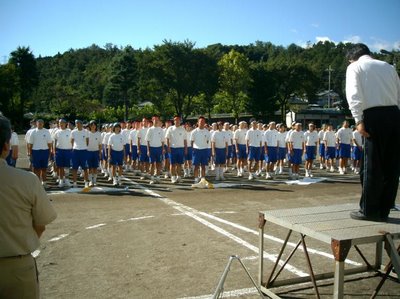
The ceremony at the start of the games. Very, um... ceremonious.
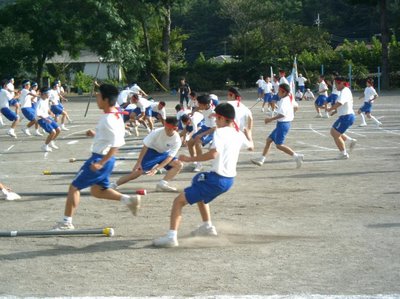
One of the more active events was the bo-hiki, or "pole pull". Basically, two teams are lined up about 50 yards apart, and a line of poles is put down the middle. At the sound of the starters pistol, both teams rush to get as many poles back to their side of the field as they can in one minute. The last few poles is always a struggle, with about 10 students from each team dragging on them. Hilarity often ensues. ^_^

The high jump was a big event this year - the last two students were jumping outrageously high, and it was a real nail-biter. All other events stopped so that everyone could watch. This guy eventually won, with a cleared height of 155 cm, or about 5 feet 1. Not olympic quality, but I sure as heck couldn't do that.

The audience for the high-jump.
 After most of the events were complete, there was a big, school-wide dance, that was more like a promenade, I guess. The girls would hold hands with the guys, and they would walk around in a circle for about 30 feet, do a little foot step combo, bow/curtsy, and move on to the next partner. All done to the tune of "Turkey in the Straw," I kid you not. Personally, I thought it was corny in the extreme, but apparently it's popular among the students. I guess in middle school everyone's a little shy, and that is magnified in Japan. A little school-sponsored flirtation might be just what the doctor ordered. Kinda like the excuse to break the ice with the holler dollars.
After most of the events were complete, there was a big, school-wide dance, that was more like a promenade, I guess. The girls would hold hands with the guys, and they would walk around in a circle for about 30 feet, do a little foot step combo, bow/curtsy, and move on to the next partner. All done to the tune of "Turkey in the Straw," I kid you not. Personally, I thought it was corny in the extreme, but apparently it's popular among the students. I guess in middle school everyone's a little shy, and that is magnified in Japan. A little school-sponsored flirtation might be just what the doctor ordered. Kinda like the excuse to break the ice with the holler dollars.
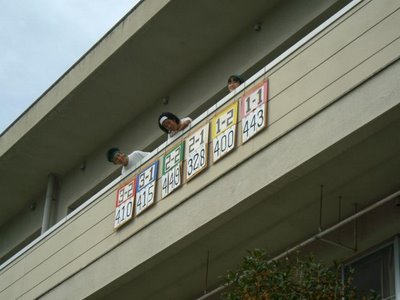 This is how they kept score - tallying with boards on the third floor of the building. The colors around each class correspond to the headbands they are wearing. The Japanese word for headband is 'hachimaki,' and they are a big deal. All the kids were really competetive once they got their headbands on - a couple of the classes even had little group pump-up ceremonies where they all donned their hachimaki at once. Headband = fighting spirit. That's pretty cool - I may have to start doing that, and see if it works.
This is how they kept score - tallying with boards on the third floor of the building. The colors around each class correspond to the headbands they are wearing. The Japanese word for headband is 'hachimaki,' and they are a big deal. All the kids were really competetive once they got their headbands on - a couple of the classes even had little group pump-up ceremonies where they all donned their hachimaki at once. Headband = fighting spirit. That's pretty cool - I may have to start doing that, and see if it works.
Well, that's all for now, I'll tell you about the culture day or something next time, along with some of my personal activities. I did Tokyo with a friend of mine over the break and got some good photos there, and also I've seen some Kabuki, performed by a bunch of elementary schoolers! It was great!! It's getting late, though, so that'll have to wait until next time. Take care, everyone! Miss you all!
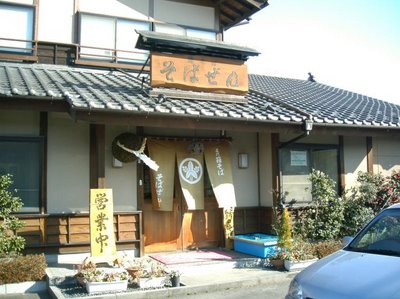
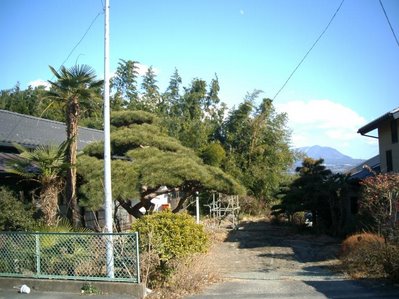
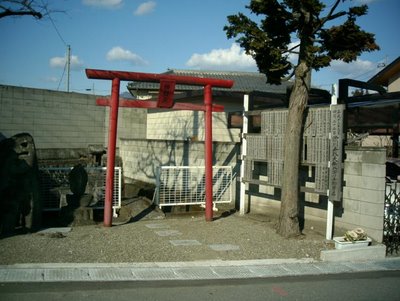
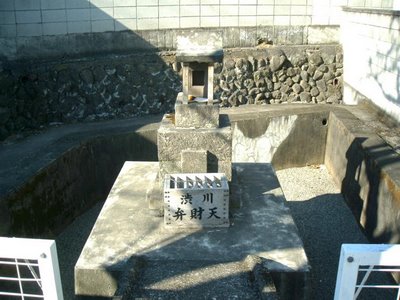
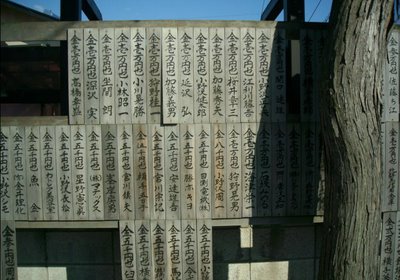

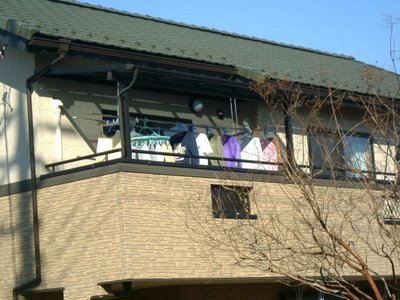


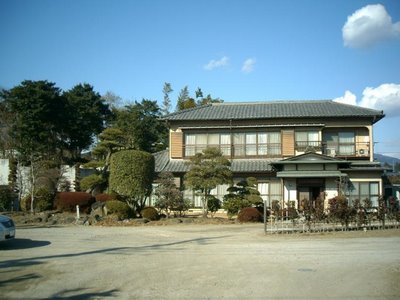

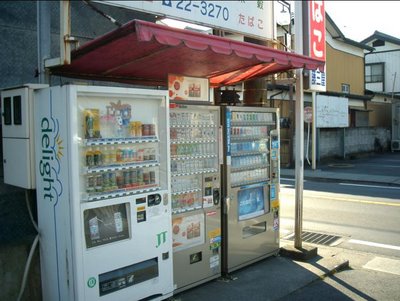
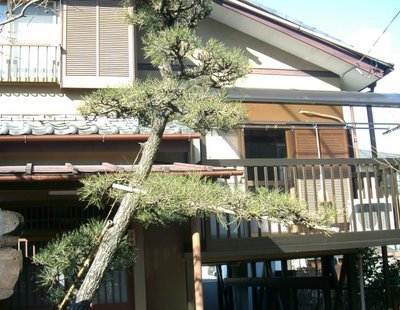
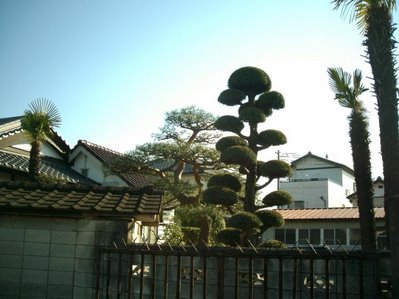

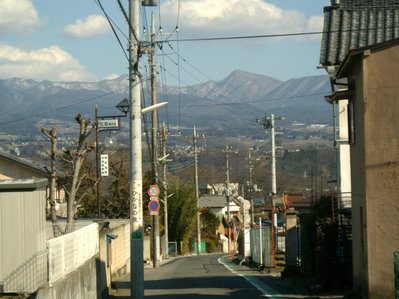
 There are a few Christian churches scattered around town, but they are in the minority. See that big mirror on the orange post? That's to let you kind of see what is around blind corners, which are everywhere in Shibukawa. It's not as effective as it looks.
There are a few Christian churches scattered around town, but they are in the minority. See that big mirror on the orange post? That's to let you kind of see what is around blind corners, which are everywhere in Shibukawa. It's not as effective as it looks.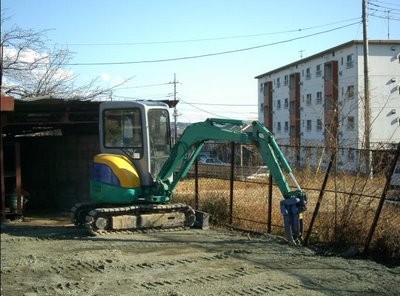
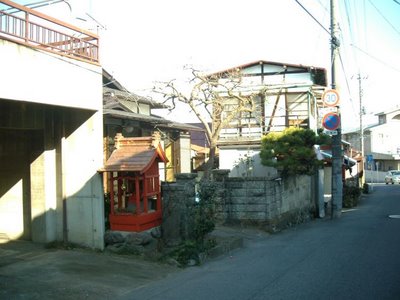
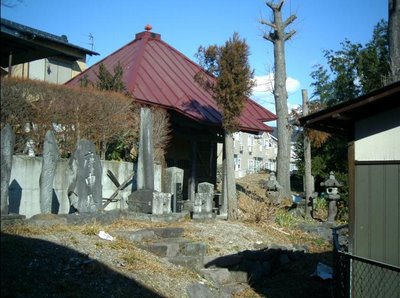
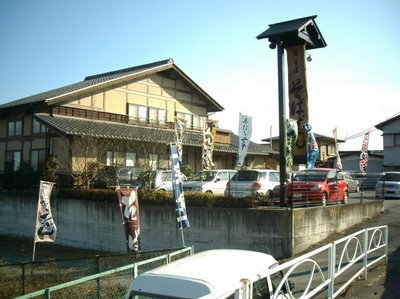

 The ceremony at the start of the games. Very, um... ceremonious.
The ceremony at the start of the games. Very, um... ceremonious. One of the more active events was the bo-hiki, or "pole pull". Basically, two teams are lined up about 50 yards apart, and a line of poles is put down the middle. At the sound of the starters pistol, both teams rush to get as many poles back to their side of the field as they can in one minute. The last few poles is always a struggle, with about 10 students from each team dragging on them. Hilarity often ensues. ^_^
One of the more active events was the bo-hiki, or "pole pull". Basically, two teams are lined up about 50 yards apart, and a line of poles is put down the middle. At the sound of the starters pistol, both teams rush to get as many poles back to their side of the field as they can in one minute. The last few poles is always a struggle, with about 10 students from each team dragging on them. Hilarity often ensues. ^_^

 After most of the events were complete, there was a big, school-wide dance, that was more like a promenade, I guess. The girls would hold hands with the guys, and they would walk around in a circle for about 30 feet, do a little foot step combo, bow/curtsy, and move on to the next partner. All done to the tune of "Turkey in the Straw," I kid you not. Personally, I thought it was corny in the extreme, but apparently it's popular among the students. I guess in middle school everyone's a little shy, and that is magnified in Japan. A little school-sponsored flirtation might be just what the doctor ordered. Kinda like the excuse to break the ice with the holler dollars.
After most of the events were complete, there was a big, school-wide dance, that was more like a promenade, I guess. The girls would hold hands with the guys, and they would walk around in a circle for about 30 feet, do a little foot step combo, bow/curtsy, and move on to the next partner. All done to the tune of "Turkey in the Straw," I kid you not. Personally, I thought it was corny in the extreme, but apparently it's popular among the students. I guess in middle school everyone's a little shy, and that is magnified in Japan. A little school-sponsored flirtation might be just what the doctor ordered. Kinda like the excuse to break the ice with the holler dollars. This is how they kept score - tallying with boards on the third floor of the building. The colors around each class correspond to the headbands they are wearing. The Japanese word for headband is 'hachimaki,' and they are a big deal. All the kids were really competetive once they got their headbands on - a couple of the classes even had little group pump-up ceremonies where they all donned their hachimaki at once. Headband = fighting spirit. That's pretty cool - I may have to start doing that, and see if it works.
This is how they kept score - tallying with boards on the third floor of the building. The colors around each class correspond to the headbands they are wearing. The Japanese word for headband is 'hachimaki,' and they are a big deal. All the kids were really competetive once they got their headbands on - a couple of the classes even had little group pump-up ceremonies where they all donned their hachimaki at once. Headband = fighting spirit. That's pretty cool - I may have to start doing that, and see if it works.